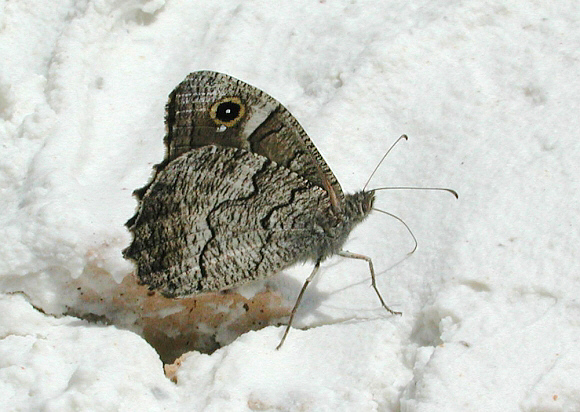 Hipparchia fatua, Lesbos, Greece – Martin Parr
Hipparchia fatua, Lesbos, Greece – Martin Parr
Introduction
There are 27 Hipparchia species, distributed variously across Europe, Asia and North Africa.
The uppersides of all species are dark earthy brown with prominent ocelli on the forewings in spaces 2 and 5, set within broad orange or brownish-white bands. When freshly emerged they often have a metallic greenish sheen along the costa. The underside hindwings are cryptically patterned with dark zig-zag lines and striations, and in most species there is a white band corresponding to that on the upperside.
Hipparchia fatua is found in Croatia, Bosnia, Serbia, Bulgaria, Greece, Turkey, Israel, Jordan, Syria and Lebanon. It also occurs on several of the Greek islands but not on Corfu or Crete.
Habitats
This species inhabits hot dry gullies, gorges and slopes abutting coniferous woodland, and is also found in orchards and olive groves. It occurs at elevations between sea level and about 600m.
Lifecycle
The larvae feed on unspecified grasses ( Poaceae ).
Adult behaviour
The adults reportedly spend long periods resting on shady tree trunks in the heat of the day.
